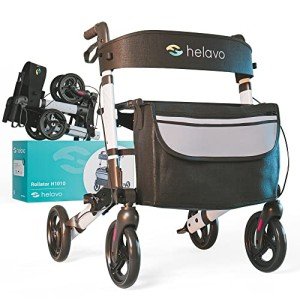11 Ways To Destroy Your Reliable Walker

The Reliable Walker: Choosing the Right Mobility Aid for Your Needs
In an ever-evolving world where mobility difficulties can develop for different factors, a reliable walker can substantially enhance an individual's lifestyle. People searching for independence in their movement discover that a walker, typically described as a walking aid, plays a vital function in their day-to-day activities, whether they are recuperating from surgery, handling persistent discomfort, or experiencing age-related mobility problems.
In this blog site post, we will go over the importance of a reliable walker, the various types offered, how to select the best one for your requirements, and some regularly asked concerns.
Comprehending Walkers
Walkers are mobility devices that aid individuals with walking problems. They provide stability and support, assisting to prevent falls and improving confidence when navigating.
Kinds of Walkers
There are numerous types of walkers offered, and understanding the differences can help you make an educated choice. Below is a table summarizing the main kinds of walkers.
| Kind of Walker | Description | Benefits | Disadvantages |
|---|---|---|---|
| Requirement Walker | A fundamental walker without wheels, needing users to lift it to move. | Offers optimum stability; easy design. | Can be cumbersome; less maneuverable. |
| Two-Wheeled Walker | Equipped with 2 wheels at the front for much easier motion. | Easier to move; more lightweight. | Less stable than a standard walker. |
| Four-Wheeled Walker | A wheeled walker with four wheels, frequently with a seat and hand brakes. | Highly maneuverable; appropriate for outdoor usage; stability with seating. | Requires some upper body strength to operate the brakes. |
| Rollator | A four-wheeled walker with a seat and storage area. | Suitable for longer ranges; comfortable seating option. | Less stability than standard walkers; can be more costly. |
| Hemi Walker | Designed for those who can utilize only one hand or lower limb. | Helpful for one-handed support; lightweight. | Might not offer as much support as standard alternatives. |
Secret Factors to Consider When Choosing a Walker
Selecting the right walker is vital for security and self-reliance. Here are some key factors to think about:
1. User's Physical Condition
- Assess the user's balance, strength, and series of motion. Some users might require more support and stability, while others might choose something lighter and more mobile.
2. Planned Use
- Think about where the walker will mainly be used-- inside, outdoors, or both. Walkers developed for outdoor use typically include bigger wheels.
3. Weight Capacity
- Guarantee that the walker can support the user's weight. Most walkers feature weight capacity specifications, generally varying from 250 to 500 pounds.
4. Adjustability
- Try to find a walker that can be adjusted in height to make sure correct posture and convenience while walking.
5. Extra Features
- Many walkers featured features such as brakes, seats, baskets, and even built-in lights. Assess which features are essential for the user's needs.
6. Aesthetic appeals
- While functionality is critical, lots of modern walkers are created with visual appeals in mind. Select Learn Additional that the user feels good about utilizing.
The Benefits of a Reliable Walker
Utilizing a reliable walker has several advantages, including:
- Increased Independence: Users can move by themselves without relying heavily on others for support.
- Increased Confidence: A stable walker gives users the security they need to move easily, minimizing the worry of falling.
- Enhanced Stability: Walkers considerably enhance balance, especially for those with mobility problems.
- Improved Quality of Life: With enhanced mobility, users can engage more actively in social, recreational, and everyday activities.
Frequently Asked Questions (FAQ)
1. How do I know if I need a walker?
If you find walking to be tough, experience regular falls, have just recently had surgery, or have chronic conditions affecting your mobility, it may be time to think about a walker.
2. Can I utilize a walker on outdoor surfaces?
Yes, but consider getting a four-wheeled walker or a rollator developed specifically for outdoor surfaces, as they normally have bigger wheels for much better maneuverability.
3. How can I adjust my walker for the very best fit?
Many walkers have height-adjustable legs. Stand in your shoes, and with your arms relaxed at your sides, the top of the walker should be at wrist level.
4. How do I keep my walker?
Regularly check the walker for any loose screws or parts, ensure the wheels are moving smoothly, and clean it periodically to preserve its condition.
5. How can I develop my self-confidence while utilizing a walker?
Start using the walker in familiar and safe environments. Slowly increase the intricacy of your surroundings as you end up being more comfortable.
In conclusion, a reliable walker is not just a mobility aid; it's a means to higher independence, safety, and improved quality of life. Comprehending the types of walkers readily available and assessing individual requirements can assist people make informed choices. Whether it's a standard walker or a modern rollator, the best equipment fosters self-reliance and self-confidence in mobility.
If you or a loved one faces mobility challenges, think about purchasing a walker that meets individual needs, improves mobility, and ultimately, enhances everyday living. With the ideal option, users can reclaim control of their motion, promoting a more active and fulfilling life.

